This post may contain affiliate links which means I may receive a commission for purchases made through links. Learn more on my Private Policy page.
Looking to find out how to store spinach naturally so it stays fresh all week long? You’ve come to the right place! This comprehensive guide provides tips, tricks, and storage hacks for keeping this healthy leafy green fresh and nutritious for days, including the best containers to use and common mistakes to avoid.

Vegetable, nutrient-dense, leafy green spinach is a staple in many cuisines worldwide. Whether you use spinach as a cooked side dish, in smoothies, or salads, it can be challenging to keep it fresh. With the help of this thorough instruction, you’ll be able to preserve spinach in the best possible way, keeping it fresh and nutrient-rich for as long as possible. All the doubts related to “How to store Spinach” will be cleared here.
Health Benefits of Spinach
Spinach is a powerhouse of nutrition. Iron, calcium, magnesium, and the vitamins A, C, and K are abundant. Spinach also has fiber and antioxidants, suitable for your general health. Eating spinach helps strengthen your bones, strengthen your immune system, and promote healthy skin.
Importance of Proper Storage
To get the most out of spinach, it’s crucial to store it properly. Improper storage can lead to wilting, loss of nutrients, and spoilage. By following proper storage methods, you can maintain spinach’s freshness and nutritional value for a more extended period.
Pre-Storage Preparation
Before storing spinach, it’s essential to clean it properly.
Rinsing Under Cold Water
First, give the spinach leaves a thorough rinse under cold running water. This aids in getting rid of any bacteria, pesticides, or dirt.
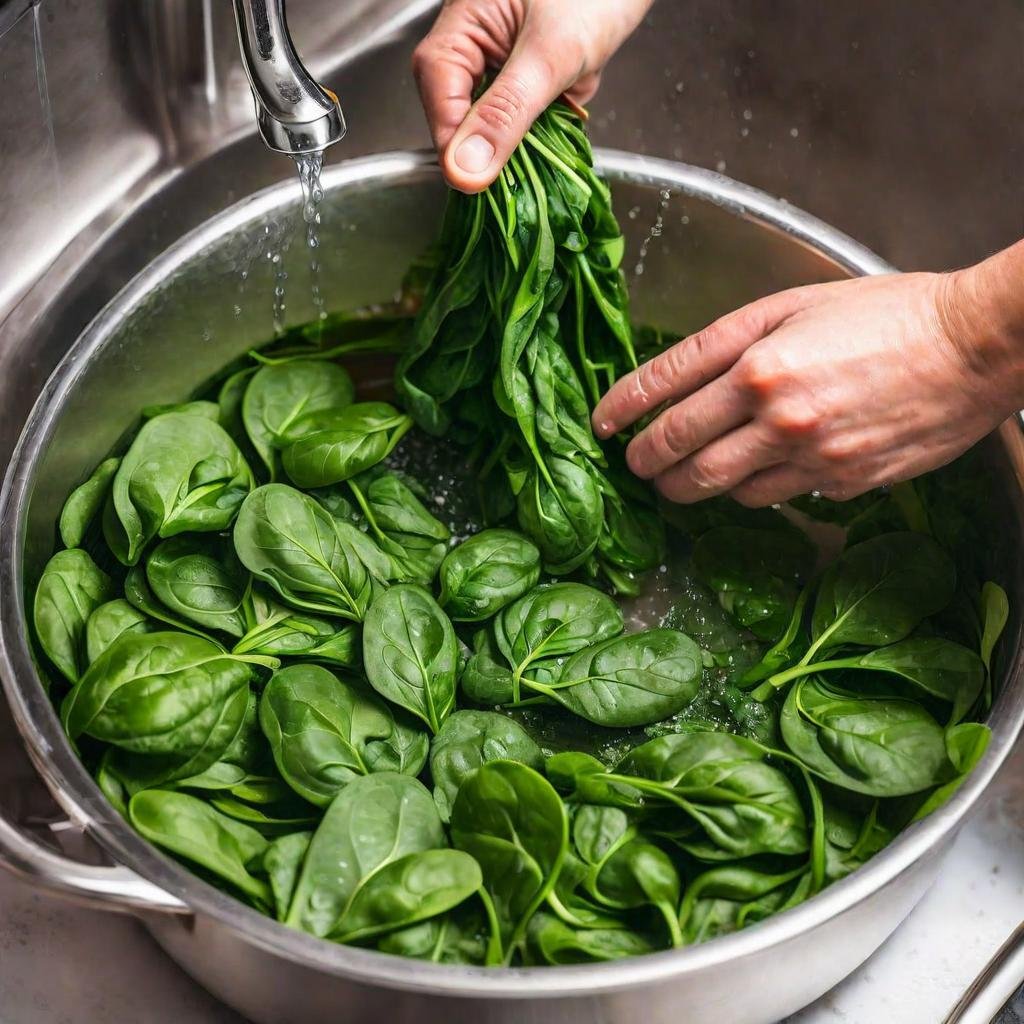
Using a Salad Spinner to Remove Excess Moisture
After rinsing, use a salad spinner to remove excess moisture. Spinach stored while wet can quickly become slimy and spoil.
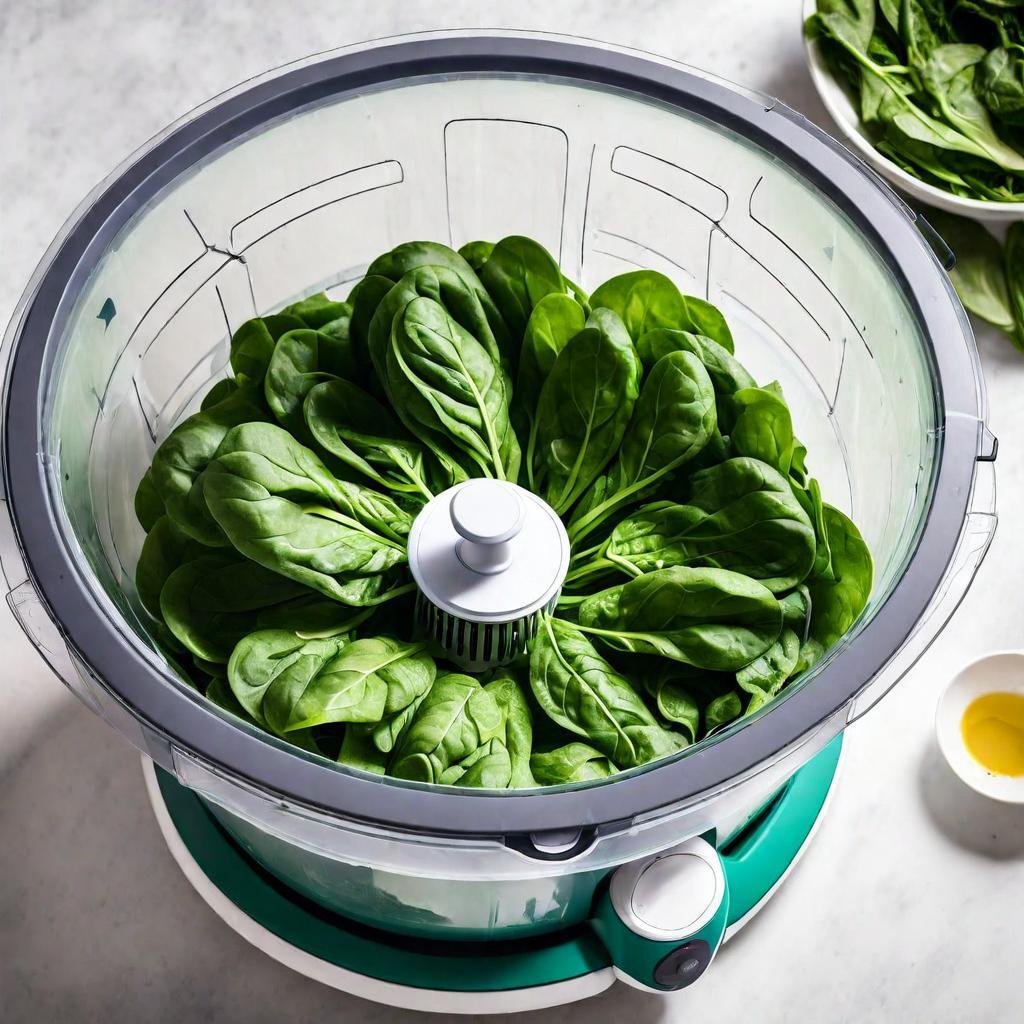
Patting Dry with a Clean Towel or Using Paper Towels
If you don’t have a salad spinner, pat the spinach dry with a clean towel or paper towel. Ensuring the leaves are dry is crucial for maintaining their freshness.

Storage Methods
Method 1: Refrigeration (Step by Step Process to Refrigerate Spinach)
Step 1- Using Airtight Containers or Resealable Plastic Bags
Store the dried spinach in airtight containers or resealable plastic bags. This helps prevent moisture loss and protects the spinach from contaminants.
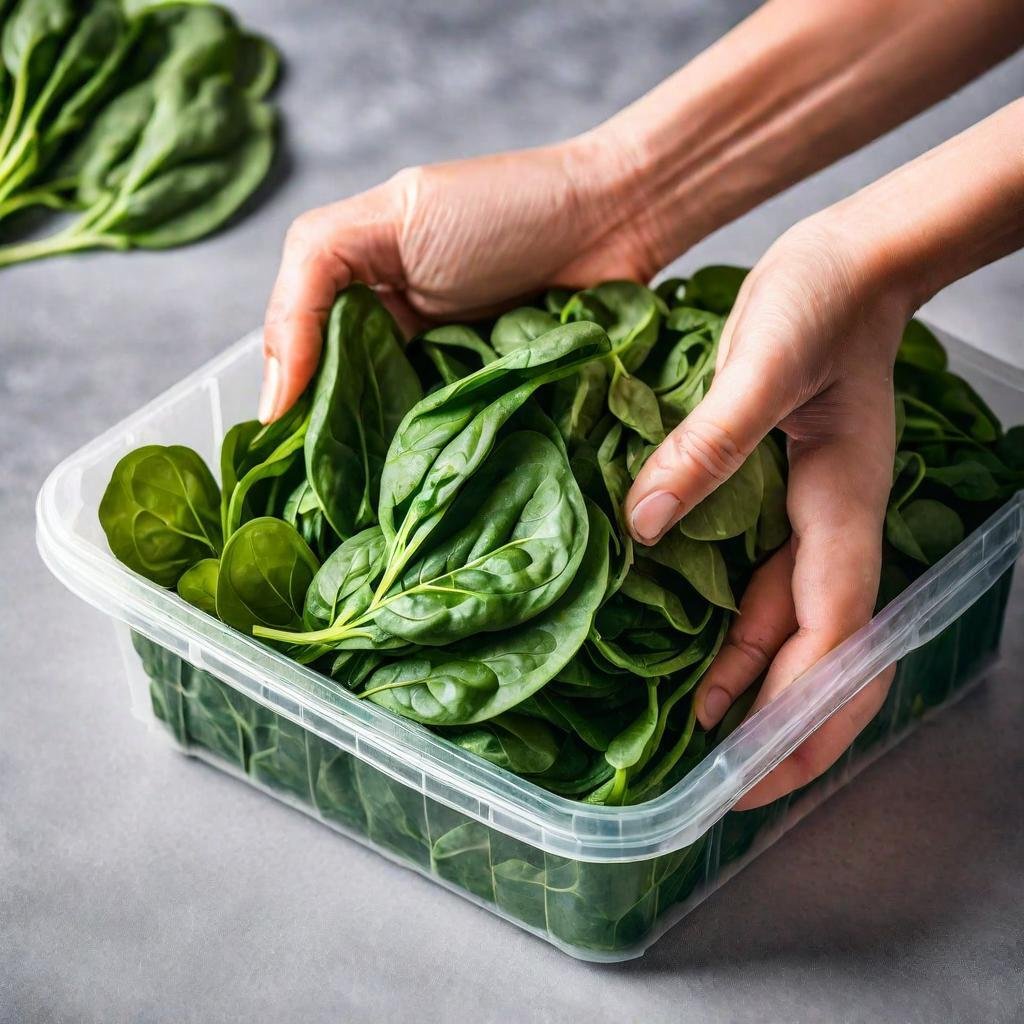
Step 2- Adding a Paper Towel Inside the Bag to Absorb Excess Moisture
Place a paper towel inside the bag or container to absorb extra moisture. Spinach’s shelf life can be increased with this straightforward approach.

Step 3- Placing Spinach in the Crisper Drawer for Optimal Temperature and Humidity
For optimal freshness, store the spinach in the crisper drawer of your refrigerator. The crisper drawer maintains the ideal temperature and humidity levels for leafy greens.
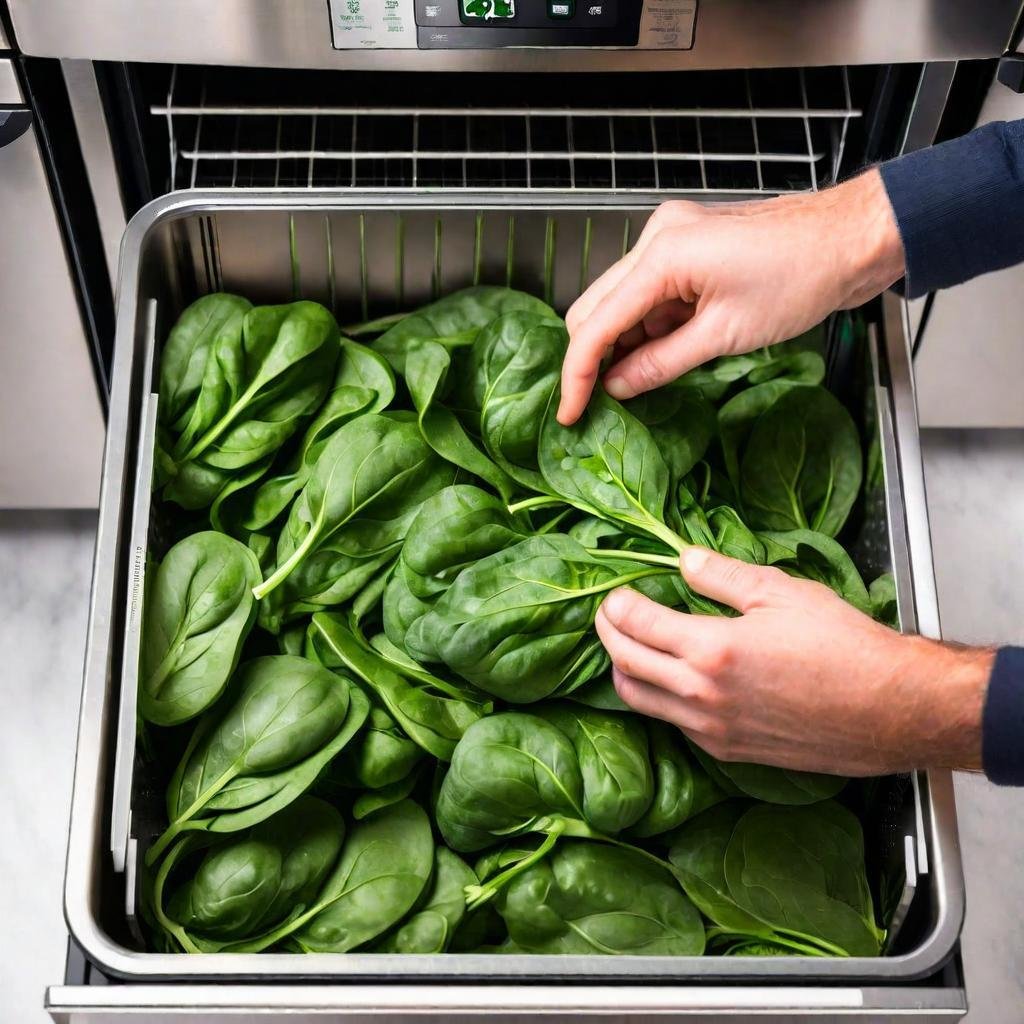
Method 2: Freezing (Step by Step Process to Freeze Spinach)
Step 1- Blanching Spinach Before Freezing
Blanching is a process of briefly boiling spinach and cooling it rapidly in ice water. This process aids in maintaining the nutrition, color, and flavor.
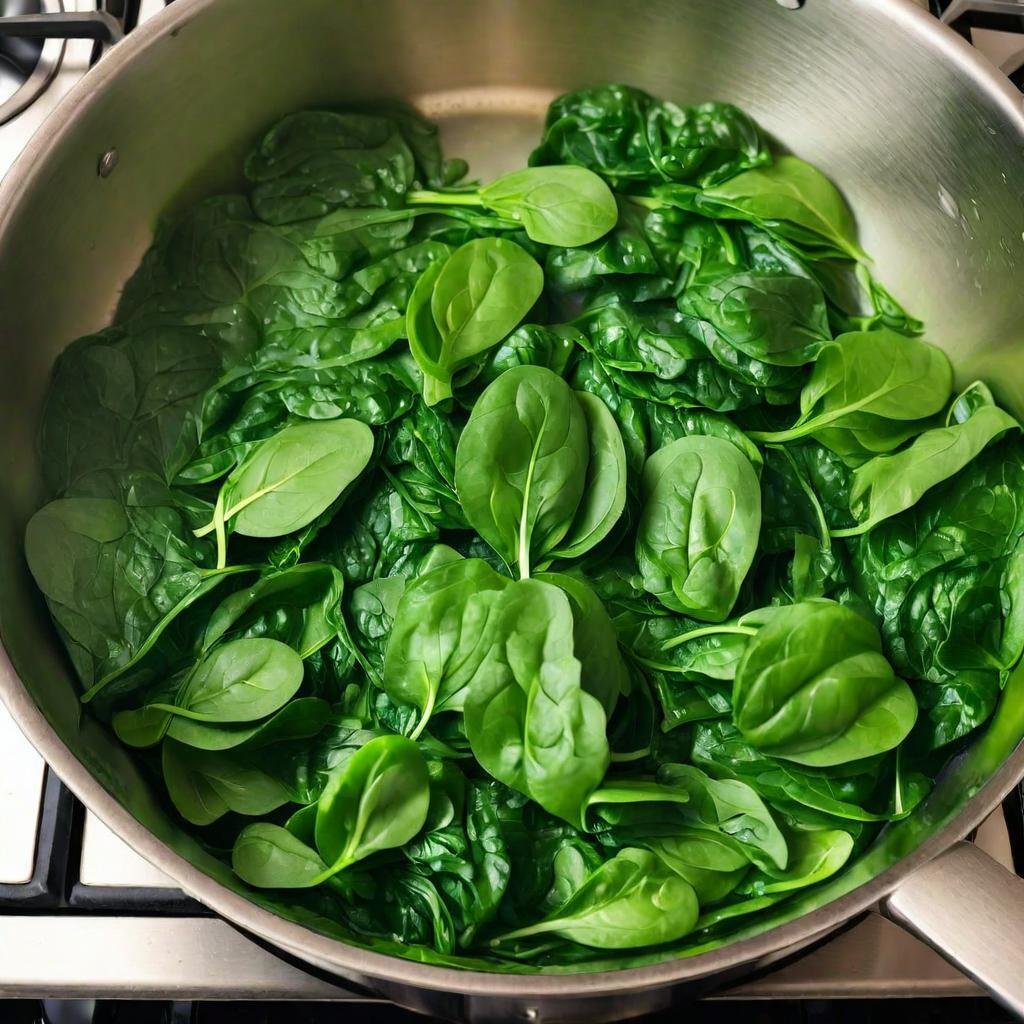
Step 2- Cooling and Drying the Blanched Spinach
After blanching, let the spinach cool and then dry it thoroughly. Removing excess moisture is crucial before freezing to prevent ice crystals from forming.

Step 3- Storing in Freezer-Safe Bags or Containers
Place the dried spinach in freezer-safe bags or containers. Before sealing, remove as much air as possible to prevent freezer burn.
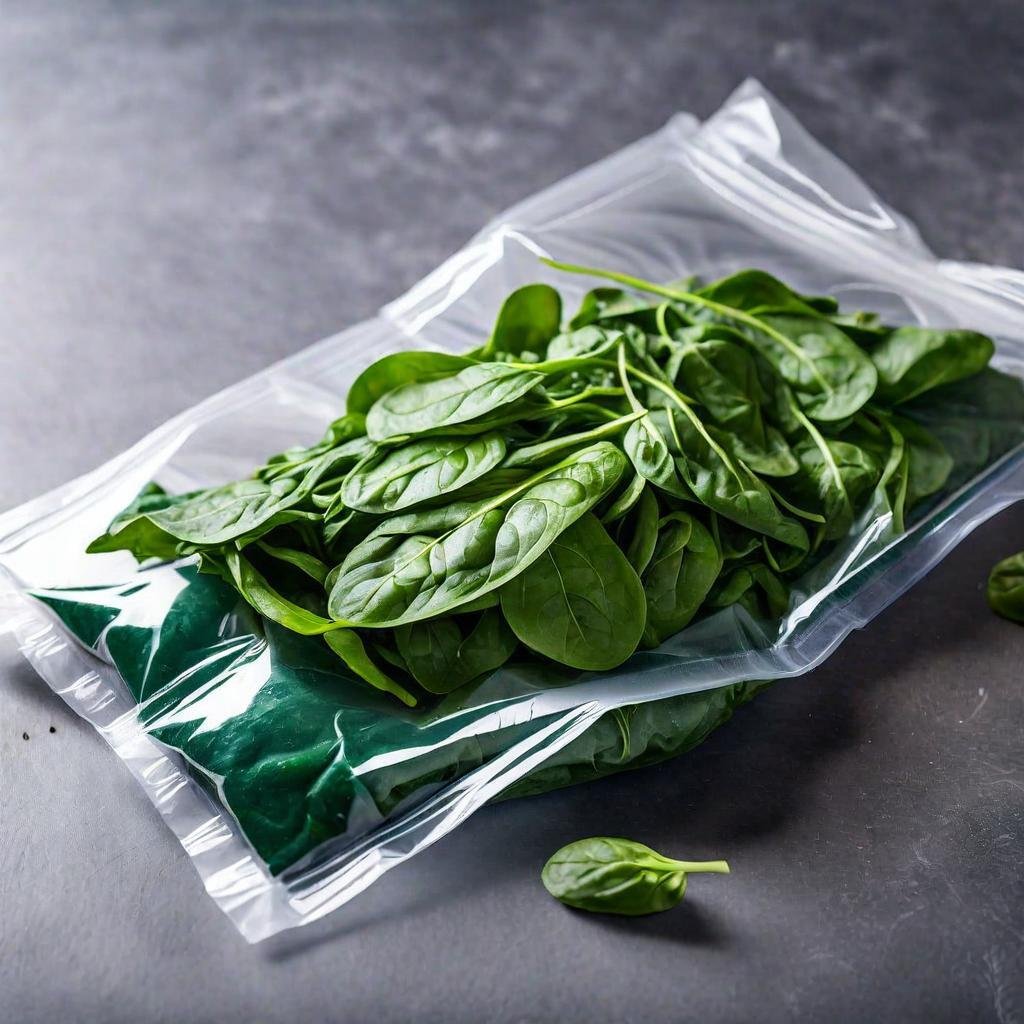
Step 4- Labeling with Date for Reference
The date should always be written on the bags or containers. This guarantees that you use the oldest spinach first and helps you keep track of how long the spinach has been stored.
Method 3: Using a Vacuum Sealer
Benefits of Vacuum Sealing for Longer Storage
An ideal technique for long-term storage is vacuum sealing. It removes air from the package, reducing oxidation and spoilage.

Steps to Vacuum Seal Spinach
To vacuum seal spinach, place the dried leaves in a vacuum bag, seal it according to the vacuum sealer instructions, and store it in the refrigerator or freezer.
Storing Vacuum-Sealed Bags in the Refrigerator or Freezer
Vacuum-sealed spinach can be stored in the refrigerator for short-term use or in the freezer for extended periods.
Other Important Storage Tips
Using Glass Jars for Short-Term Storage
For short-term storage, consider using glass jars. They are airtight and help keep spinach fresh for a few days.
Storing Spinach with Other Greens or Separately
Store spinach separately from other greens to prevent cross-contamination and to manage moisture levels effectively.
The Impact of Different Temperatures and Humidity Levels on Spinach Freshness
Be mindful of the storage environment. Different temperatures and humidity levels can significantly impact spinach’s freshness and shelf life.
Signs of Spoilage
Spoiled spinach will have a slimy texture, a foul odor, and discoloration. These signs mean it’s time to discard the spinach.
When to Discard Spinach to Avoid Health Risks
If you notice any spoilage, it’s best to discard the spinach to avoid any potential health risks.
Maximizing Spinach Shelf Life
Check your spinach regularly for indications of spoiling. Early detection can help prevent the spread of decay.
Common Mistakes to Avoid
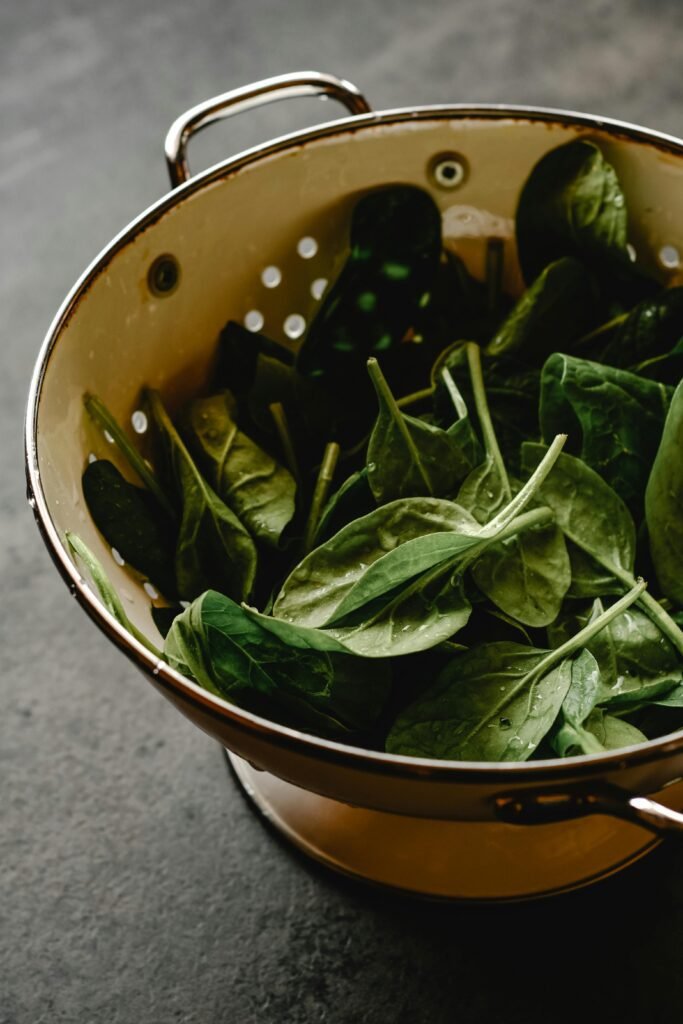
1. Storing Spinach Wet
Storing wet spinach can lead to rapid spoilage. Always ensure the leaves are dry before storing.
2. Keeping Spinach in the Original Store Packaging
The original store packaging is not designed for long-term storage. Transfer spinach to airtight containers or resealable bags for better preservation.
3. Overpacking Storage Containers
Avoid overpacking containers. Spinach needs some space to breathe, and overpacking can cause the leaves to become bruised and spoil faster.
Selecting Fresh Spinach
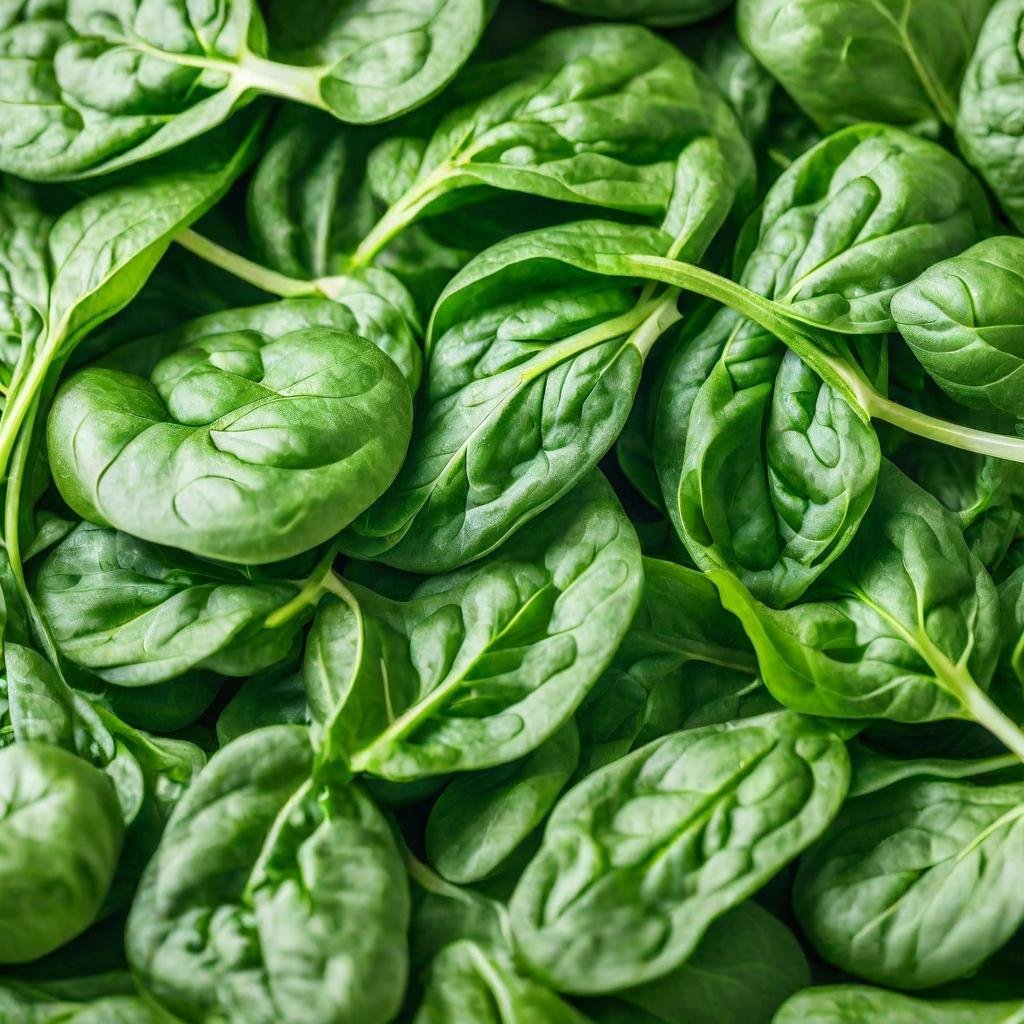
Look for Vibrant Green Leaves
Choose spinach with vibrant green leaves. This signifies freshness and a high nutrient content.
Avoid Wilted or Yellowing Leaves
Wilted or yellowing leaves are signs that the spinach is past its prime. Avoid these to ensure you’re you’re getting the freshest product.
Check for Crispness and Absence of Slime
The leaves should be crisp and free of slime. Slime is a clear indicator of spoilage.
Best Containers for Storing Spinach
When it comes to keeping spinach fresh and nutritious for as long as possible, the type of container you use for storage plays a crucial role. Proper storage helps maintain the leafy green’sgreen’s freshness and nutrient content. Below are some of the best containers and methods for storing spinach, ensuring it stays crisp and ready for use.
Airtight Plastic Containers
Airtight plastic containers are among the best options for storing spinach. These containers prevent air from entering, reducing oxidation and moisture loss, which can cause spinach to spoil quickly.
Resealable Plastic Bags
Resealable plastic bags are convenient and can be easily found in most households. They offer a versatile storage solution and are especially suitable for short-term storage.
Glass Containers with Airtight Lids
Glass containers are excellent for those looking to reduce plastic use. They are non-reactive, ensuring no chemicals leach into your food and maintaining temperature well.
Vacuum-Sealed Bags
Vacuum-sealed bags are ideal for long-term storage in the refrigerator or freezer. Vacuum sealing removes air, significantly reducing oxidation and extending the shelf life of spinach.
Reusable Silicone Bags
Reusable silicone bags are an eco-friendly alternative to plastic bags. They are long-lasting, non-toxic, and reusable, making them a sustainable option.
FAQ’s
1. How can I keep spinach from growing slimy in the fridge?
To prevent spinach from becoming slimy:
- Ensure it is scorched before storage.
- After washing, use a salad spinner to remove excess moisture from the leaves, or pat dry with a clean towel or paper towel.
- Store the spinach in an airtight container or resealable plastic bag with a dry paper towel to absorb residual moisture.
Placing the container in the crisper drawer of your refrigerator, which maintains the ideal humidity levels, can also help keep spinach fresh.
2. Can I store spinach in the freezer without blanching it first?
While you can technically store spinach in the freezer without blanching, it is not recommended. Blanching spinach before freezing helps preserve its color, texture, and nutritional value by stopping enzyme actions that cause flavor, color, and texture loss. To blanch spinach, boil the leaves for about 2 minutes, then immediately cool them in ice water before drying and freezing. This process ensures better quality and longer storage life in the freezer.
3. What is the best way to store spinach for making smoothies?
For smoothies, freezing spinach is a great option. After washing and drying the spinach, blanch it briefly to maintain its quality. Once blanched and cooled, dry the leaves thoroughly and spread them on a baking sheet to freeze them individually. After frozen, transfer the spinach to freezer-safe bags or containers, removing as much air as possible. This method lets you quickly grab a handful of spinach for your smoothies without thawing an entire batch.
4. How can I tell if my stored spinach is still good to eat?
Fresh spinach should have vibrant green leaves and a crisp texture. Signs that your spinach has gone bad include a slimy texture, a foul odor, or discoloration (yellowing or browning leaves). If you notice any of these signs, it is best to discard the spinach to avoid potential health risks. To reduce waste, check your spinach storage regularly and consume older spinach first.
5. What are the advantages of using glass jars for short-term spinach storage?
Glass jars are an excellent option for short-term spinach storage for several reasons. They are airtight, which helps maintain the freshness of spinach by preventing air exposure and moisture loss. Glass is also non-reactive, ensuring that no chemicals leach into your food, which is a concern with some plastics. Additionally, glass jars are easy to clean and reusable, making them an eco-friendly choice. Store spinach in glass jars, ensure the leaves are dry, place a paper towel inside to absorb moisture, and store the jar in the refrigerator.


1 thought on “How to Store Spinach for Maximum Freshness”